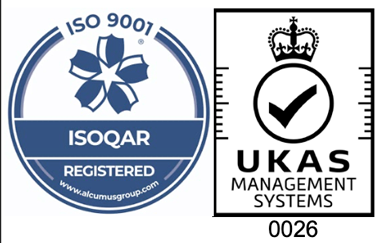Neoprene Rubber: Solution for Versatile & Reliable Performance
28th September, 2023
In this article, we will talk about Neoprene rubber, how it can be used in various industries due to its reliability and versatility. We’ll cover the best uses for Neoprene and the different customisations available.
Neoprene rubber was originally developed as an oil-resistant alternative to natural rubber. Neoprene is the trade name for a group of synthetic rubbers based on polychloroprene.
Where Neoprene Rubber excels:
Gaskets and Seals
Neoprene rubber is an excellent material for gaskets and seals due to its unique properties that make it resistant to a wide range of factors. Neoprene rubber is highly resistant to many chemicals, oils, and solvents, making it suitable for sealing in environments that are constantly exposed to these substances. It maintains its integrity and functionality even when in contact with a variety of industrial fluids.
Neoprene rubber has exceptional weather resistance, including resistance to ozone, UV radiation and extreme temperatures. This makes it ideal for environments with dramatic temperature fluctuations.
Neoprene rubber has excellent water resistance and is often used where a watertight seal is required. It can maintain its sealing performance even when submerged in water for extended periods.
Insulation
Neoprene rubber also has good thermal insulating properties. It has a low thermal conductivity, which means it can effectively reduce the transfer of heat between two surfaces. This property is valuable when temperature control and insulation are important, such as HVAC systems, automotive components and electrical enclosures.
Shock Absorption
Neoprene rubber mounts, bumpers and shock absorbers are commonly used in industrial machinery and equipment to protect against shock and vibration. They help improve equipment stability, reduce noise and prevent damage from sudden impacts.
Vibration Dampening
Neoprene rubber is highly elastic and flexible, allowing it to absorb and dissipate mechanical vibrations effectively. When vibrations occur, neoprene rubber deforms and absorbs the energy generated by the vibrations. This reduces the transmission of vibration to other components or surfaces.
Customisation:
Neoprene rubber is available in various thicknesses, ranging from thin sheets to thicker blocks. The choice of thickness depends on the desired level of cushioning, insulation or protection required.
Neoprene rubber comes in different durometer levels, or the standardised way to measure the hardness of materials. Softer durometer levels provide better flexibility and shock absorption, while harder levels offer greater durability and resistance. Customisation allows you to select the right durometer for your specific needs.
While neoprene rubber is commonly black, it can be custom manufactured in different colours to match aesthetics or colour schemes.
For more information about Aquaseal’s Neoprene rubber products click here.


